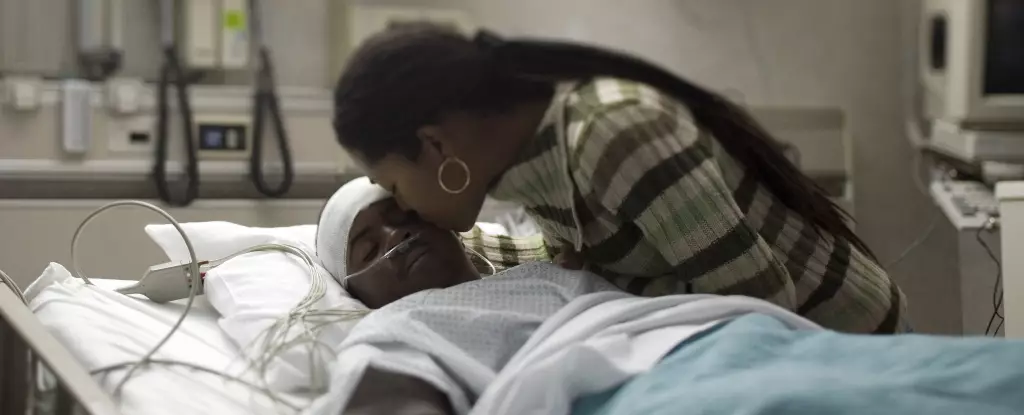The landscape of neurocritical care has entered a new frontier with the startling announcement from researchers at Columbia University and New York-Presbyterian regarding comatose patients’ hidden consciousness. It’s an inquiry that encompasses not just medical science but profound emotional stakes for families submerged in uncertainty about the fate of their loved ones. The traditional understanding of coma, often equated with deep sleep, obscures critical realities about brain function. This research boldly challenges our perception of consciousness and its manifestations, as it highlights how the brain can reveal signs of awareness through seemingly mundane neuronal activity.
Understanding the prognosis of comatose patients has been akin to gazing into a murky abyss, fraught with questions and dread. Though EEG (electroencephalography) has historically been a reliable tool, its conventional application has typically faltered at crucial moments and often produced uncertain outcomes. However, what this new research sheds light on is astonishing; not only can EEG be reworked into a diagnostic tool, but it can also be employed during unorthodox hours—specifically, at night, when the brain is often considered to be at rest. The discovery that sleep spindles, unique oscillations in brain activity cleanly observable through EEG scans, can be detected at these times offers a glimmer of hope.
The researchers delved into the mind’s intricate tapestry of electric signals during a study involving 226 patients with acute brain injuries. What emerged was nothing short of revolutionary. By identifying sleep spindles, researchers could glean insights into the brain regions crucial for consciousness. These bursts of electrical activity, so often categorized within the realm of typical non-REM sleep, suggested that essential pathways necessary for awareness might be intact, even in seemingly unresponsive individuals.
This groundbreaking approach has the potential to alter prognosis trajectories and allow families to anticipate responses with greater accuracy. In light of past failures and mishaps in prognostic evaluations, the implications of reliable indicators of consciousness are profound. As neurologist Jan Claassen articulates, we are on the cusp of unraveling deep-seated beliefs regarding unconsciousness, paving the way to identify preemptive signs of recovery that were once thought infeasible.
These promising findings also extend beyond theoretical frameworks; the researchers found that just over 40% of patients exhibiting well-formed sleep spindles along with positive cognitive motor dissociation (CMD) evaluations regained consciousness—a percentage that carries significant weight when considering the emotional toll on families. The ramifications of combining sleep data with CMD assessments could improve predictive capabilities concerning patient outcomes, and attendant hospital care could be entirely transformed.
Building upon this research, Claassen and his team are venturing further—perhaps into the realm of therapeutic interventions. Manipulating brain waves during sleep to increase the likelihood of regaining consciousness represents a new horizon in patient care. Can we leverage neuroplasticity and functional connectivity to induce states of awareness in patients deemed unresponsive?
As we ride this wave of ground-breaking innovations, we must address the ethical complexities that arise when revisiting the narratives surrounding comatose patients. Families bear emotional burdens deepened by continued uncertainty. When the medical community presents possibilities of awakening, the need for ethical foresight strengthens. A patient’s consciousness, or lack thereof, is no trifling matter; it holds profound implications for quality of life, treatment decisions, and ultimately—human dignity.
In navigating the complexities of both hope and heartbreak, we must tread thoughtfully. Continuous dialogue between medical professionals and families is essential as they grapple with new revelations in neurocritical care. This opens the door not only to better prognostic tools but invites us to reassess the strengths within our healthcare systems, pushing for innovations that directly cater to the experience of both the patient and their families.
The world of scientific inquiry is advancing rapidly, and as we unearth more about the mind’s inner workings, the goal remains clear: to illuminate the shadows of uncertainty that loom over those in a state of liminality. The quest for knowledge won’t just change lives; it will reshape humanity’s understanding of consciousness itself.


Leave a Reply